#How to Advertise Your Business on Google: A Comprehensive Guide
Explore tagged Tumblr posts
Text
How to Advertise Your Business on Google: A Comprehensive Guide
How to Advertise Your Business on Google: A Comprehensive Guide:- In today’s digital age, advertising your business on Google has become essential for reaching a wide audience and driving growth. Google, being the world’s leading search engine, offers a variety of advertising options to help your business thrive. In this article, we’ll explore the ins and outs of advertising on Google and provide…
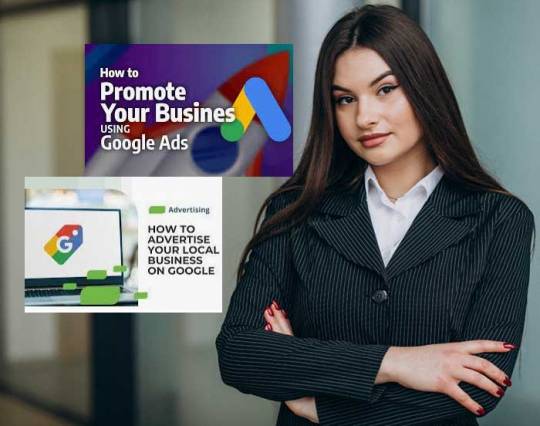
View On WordPress
#add my business to google#add your business to google#advertise my business#advertise your business#best way to advertise your business#google my business ads#how to add your business to google#how to advertise my business#how to advertise my business locally#how to advertise my business on google#how to advertise your business#how to advertise your business on google#How to Advertise Your Business on Google: A Comprehensive Guide#how to advertise your product#how to promote my business online for free#how to promote your business#how to promote your business locally#promote your business#ways to advertise your business#ways to promote your business#where can i advertise my business for free#where to advertise your business
0 notes
Text
A Comprehensive Guide to Thriving as a Digital Marketing Freelancer
In today’s digital-first world, businesses of all sizes recognize the power of online marketing. As a digital marketing freelancer, you’re uniquely positioned to help these businesses grow, all while enjoying the flexibility and autonomy of freelancing. Whether you’re just starting or looking to refine your strategies, this guide will help you thrive in the competitive digital marketing landscape.
Why Choose Freelancing in Digital Marketing?
Freelancing offers numerous benefits, including:
Flexibility: Work from anywhere, at any time.
Variety: Engage with diverse clients and industries.
Autonomy: Set your own rates, choose your clients, and define your work scope.
Scalability: Expand your business as you gain experience and build your portfolio.
Key Skills Every Digital Marketing Freelancer Needs
To excel in this field, you’ll need a mix of technical expertise and soft skills:
1. Technical Skills
Search Engine Optimization (SEO): Master on-page, off-page, and technical SEO strategies.
Content Marketing: Craft compelling blog posts, social media content, and email campaigns.
Pay-Per-Click (PPC) Advertising: Manage campaigns on platforms like Google Ads and Facebook Ads.
Analytics: Interpret data from tools like Google Analytics to optimize campaigns.
Web Design Basics: Familiarity with platforms like WordPress or Wix can be a plus.
2. Soft Skills
Communication: Clear communication with clients ensures smooth collaboration.
Time Management: Efficiently juggle multiple projects and deadlines.
Problem-Solving: Tackle challenges creatively to deliver results.
Networking: Build and maintain relationships within the industry.
How to Get Started
1. Define Your Niche
Specializing in a niche—whether it’s e-commerce, local businesses, or tech startups—can set you apart from competitors.
2. Build a Portfolio
Create case studies showcasing your results. If you’re just starting, offer your services at a discounted rate or collaborate with non-profits to gain experience.
3. Establish an Online Presence
Your digital footprint is your brand. Invest in a professional website, optimize your LinkedIn profile, and maintain active social media accounts to showcase your expertise.
4. Leverage Freelance Platforms
Platforms like Upwork, Fiverr, and Toptal can connect you with clients. Ensure your profile highlights your skills, experience, and previous successes.
Tips for Sustained Success
1. Stay Updated
Digital marketing is ever-evolving. Regularly update your knowledge through courses, webinars, and industry blogs.
2. Build Long-Term Relationships
Focusing on client satisfaction and delivering exceptional results can lead to repeat business and referrals.
3. Diversify Your Income Streams
Consider offering additional services like training sessions, digital marketing audits, or consultancy to increase your earnings.
4. Track and Showcase Results
Quantify your impact with metrics like increased traffic, conversion rates, or ROI to demonstrate your value.
5. Set Clear Boundaries
Define your working hours, payment terms, and project scope to maintain a healthy work-life balance.
Overcoming Challenges
Freelancing comes with its hurdles, including inconsistent income, client management, and staying motivated. Address these by:
Building an emergency fund to cover slow periods.
Setting clear expectations and contracts with clients.
Breaking projects into smaller milestones to maintain focus.
Final Thoughts
Becoming a successful digital marketing freelancer requires dedication, continuous learning, and strategic planning. By honing your skills, building a strong brand, and delivering exceptional results, you can carve out a thriving career in this dynamic industry.
2 notes
·
View notes
Text
"How to Build a Million-Dollar Business: Lessons from Successful Entrepreneurs"
Building a million-dollar business is an ambitious yet achievable goal, requiring a combination of strategic planning, execution, resilience, and adaptability. Below, I’ll outline a comprehensive guide that can help you turn your entrepreneurial vision into a reality.

How to develop a successful business plan for a million-dollar company"
Market Research:
Pain Points: What problems do human beings face in their each day lives, paintings, or pursuits?
Gaps inside the Market: Are there any unmet dreams or underserved niches?
Competitor Analysis: Who are your primary competition? What are their strengths and weaknesses? What are they NOT doing?
Value Proposition:
Unique Selling Proposition (USP): What makes your solution stand proud of the opposition? What is your "aspect"?
Customer Value: How does your product/service resolve a problem on your target audience? How does it improve their lives?
2. Validate Your Idea
Minimum Viable Product (MVP): Create a easy version of your product/issuer to check your assumptions. This may be a touchdown page, a prototype, or a limited initial imparting.
Early Adopters: Seek out early adopters who're inclined to attempt your product/service and offer comments.
Data Collection: Track key metrics, along with website site visitors, purchaser acquisition value (CAC), and consumer lifetime fee (CLTV).
Customer Feedback: Actively solicit and pay attention to patron comments. What do they like? What may be improved?
three. Build a Strong Foundation
Team Building: Assemble a talented and influenced group with complementary competencies.
Legal and Financial Structure: Choose the proper criminal form on your commercial business enterprise (e.G., sole proprietorship, LLC, business employer) and establish a sturdy economic foundation.
Operations: Develop green and scalable operations to deliver your product/issuer continuously and reliably.
4. Marketing and Sales Strategy
Target Audience: Define your ideal purchaser profile (ICP) in detail: demographics, hobbies, behaviors, ache factors.
Marketing Channels:
Content Marketing: Create treasured and tasty content cloth (weblog posts, articles, videos, social media) to attract and educate your target marketplace.
Search Engine Optimization (search engine optimization): Optimize your internet site and content to rank better in seek engine results.
Social Media Marketing: Leverage social media structures to construct brand recognition, interact with customers, and run focused advertisements.
Paid Advertising: Explore paid advertising alternatives together with Google Ads, social media commercials, and influencer advertising.
Sales Process:
Develop a clean and repeatable income manner.
Build sturdy purchaser relationships.
Provide remarkable customer support.
Five. Scale and Grow
Customer Acquisition: Continuously refine your customer acquisition strategies to build up new customers value-successfully.
Customer Retention: Focus on retaining present clients through loyalty packages, personalised stories, and terrific customer service.
Product Development: Continuously innovate and beautify your product/provider primarily based on purchaser remarks and marketplace tendencies.
Funding: Explore investment options at the side of project capital, angel customers, and bootstrapping.
6. Key Strategies for Million-Dollar Success
Focus on Customer Value: Prioritize customer satisfaction and assemble lengthy-term relationships.
Build a Strong Brand: Create a sturdy and recognizable emblem that resonates together together with your goal marketplace.
Embrace Technology: Leverage technology to automate strategies, enhance performance, and advantage a aggressive advantage.
Build a High-Performing Team: Invest in your organization and create a high satisfactory and motivating art work surroundings.
Adapt and Iterate: Be willing to conform to converting marketplace conditions and iterate in your enterprise model based totally on remarks and information.
7. Common Pitfalls to Avoid
Lack of Market Research: Jumping into a market with out thorough studies can result in high-priced mistakes.
Poor Execution: A terrific idea is best as appropriate as its execution.
Ignoring Customer Feedback: Failing to concentrate to consumer feedback can cause product/provider dissatisfaction and churn.
Cash Flow Problems: Inadequate cash glide manipulate can fast cripple a enterprise.
Overspending: Avoid vain costs and prioritize profitability.
Eight. Mindset and Persistence
Growth Mindset: Cultivate a boom mindset that embraces stressful conditions and sees setbacks as mastering possibilities.
Persistence:��Building a successful business takes effort and time. Don't surrender on your vision, even if confronted with obstacles.
Passion: Passion is essential for riding long-term success. Choose a industrial enterprise which you are absolutely captivated with.
Continuous Learning: Stay informed approximately industry traits, exceptional practices, and new technology.
Nine. Examples of Million-Dollar Businesses
E-trade: Online shops like Amazon, Shopify, and Etsy.
Software as a Service (SaaS): Companies like Salesforce, Slack, and Zoom.
Subscription Boxes: Companies like Blue Apron, Dollar Shave Club, and Stitch Fix.
Digital Marketing Agencies: Agencies that offer services along with seo, social media advertising and advertising and marketing, and content material material marketing.
Online Education Platforms: Platforms like Coursera, Udemy, and Skillshare.
2 notes
·
View notes
Text
What Does a Digital Marketing Agency Do? A Comprehensive Guide
In today’s digital-first world, businesses need a strong online presence to thrive. However, navigating the complex landscape of digital marketing can be daunting. That’s where digital marketing agencies step in. These specialized firms help businesses harness the power of the internet to attract, engage, and convert customers. Let’s delve into the services they provide and the benefits they offer.
Core Services Offered by Digital Marketing Agencies
Digital marketing agencies offer a broad spectrum of services designed to enhance a business’s online visibility and drive measurable results. Here are the primary services:
Search Engine Optimization (SEO)
SEO involves optimizing a website to rank higher in search engine results, increasing organic traffic.
Services include keyword research, on-page optimization, technical SEO, and link building.
Pay-Per-Click Advertising (PPC)
PPC campaigns, like Google Ads, deliver instant visibility by placing your ads at the top of search results.
Agencies manage ad creation, targeting, bidding strategies, and performance analysis to maximize ROI.
Social Media Marketing
Agencies create and manage campaigns across platforms like Facebook, Instagram, Twitter and LinkedIn.
This includes content creation, audience engagement, and paid social advertising.
Content Marketing
Quality content is the backbone of digital marketing. Agencies produce blogs, videos, infographics, and eBooks that resonate with your audience.
They also optimize content for SEO and shareability.
Email Marketing
From crafting engaging newsletters to automating drip campaigns, agencies help nurture leads and retain customers through email.
Website Design and Development
Many agencies offer website creation or optimization services to ensure a business’s online hub is visually appealing, user-friendly, and conversion-focused.
Analytics and Reporting
Agencies provide insights into campaign performance using tools like Google Analytics.
Regular reports help businesses understand ROI and identify areas for improvement.
Brand Strategy and Management
Digital marketing agencies assist in shaping a brand’s identity and ensuring consistency across online channels.
They often provide crisis management and reputation monitoring services.
Influencer Marketing
Collaborating with influencers can amplify brand reach. Agencies connect businesses with relevant influencers and manage campaigns.
How Businesses Benefit from Digital Marketing Agencies
Partnering with a digital marketing agency can bring transformative benefits, including:
Expertise and Industry Knowledge
Agencies have dedicated teams specializing in various aspects of digital marketing. Their expertise ensures your campaigns are effective and up-to-date with the latest trends.
Cost-Effective Solutions
Hiring an in-house digital marketer in Palakkad can be expensive. Agencies provide access to skilled professionals and advanced tools without the overhead costs.
Scalability and Flexibility
As your business grows, agencies can scale services to meet increasing demands. They can also pivot strategies quickly in response to market changes.
Access to Advanced Tools
Agencies use premium tools for analytics, keyword research, ad management, and more, offering capabilities beyond most businesses’ reach.
Focus on Core Business Activities
Outsourcing digital marketing allows businesses to concentrate on their core operations while experts handle online strategies.
Improved ROI
With data-driven approaches, agencies optimize campaigns to deliver better results, ensuring every dollar spent contributes to business growth.
Choosing the Right Digital Marketing Agency
Selecting the right digital marketing agency in Palakkad is crucial for success. Consider the following when making your choice:
Experience and Portfolio: Look for agencies with a proven track record in your industry.
Services Offered: Ensure their offerings align with your business needs.
Communication and Reporting: Transparent reporting and regular updates are essential for collaboration.
Customizable Strategies: Avoid agencies that offer one-size-fits-all solutions; your business deserves a tailored approach.
In summary, a digital marketing agency serves as a strategic partner, helping businesses navigate the digital landscape with expertise and efficiency. By leveraging their services, companies can achieve greater visibility, engage their target audience effectively, and drive sustainable growth in an ever-evolving marketplace. Contact ThinkSpot Digital for digital marketing services in Palakkad at affordable rates.
2 notes
·
View notes
Text
How Digital Marketing Training Can Help You Start Your Own Business

Starting your own business in today’s digital age means navigating a complex online landscape. Consumers are constantly engaging online, which means a strong digital presence is essential for any new business. However, understanding and mastering the tools and strategies required for effective digital marketing can be challenging without the right training. This is where a digital marketing training institute becomes invaluable. With the right digital marketing skills, you can drive your business's growth from the ground up.
In this guide, we’ll explore how digital marketing training can provide a solid foundation for launching a business. By examining core skills, tools, strategies, and expert tips, you’ll understand how digital marketing training can be a game-changer for entrepreneurs.
1. Building a Strong Online Presence
The first and most essential step in creating a successful business is establishing a credible online presence. Digital marketing training teaches you the importance of branding, website development, and content creation, helping you build a brand that resonates with your target audience.
Personal Branding: Training will help you identify your unique value proposition and communicate it effectively.
Website Development Basics: Many digital marketing training programs cover web development basics, helping you create a user-friendly, SEO-optimized website.
Content Creation: Content is the backbone of any digital strategy. Learning how to create engaging blog posts, videos, and infographics will attract and retain customers.
Expert Tip:
Use free tools like Canva for graphic design and WordPress or Wix for creating a basic website to get started.
2. Understanding SEO to Attract Organic Traffic
Search Engine Optimization (SEO) is crucial to ensure that your business can be found by potential customers. A digital marketing training institute will provide comprehensive knowledge on how SEO works, including keyword research, on-page SEO, and technical SEO aspects.
Keyword Research: Learn to identify and target keywords relevant to your business that your potential customers are searching for.
On-Page SEO: Training will cover techniques like optimizing titles, headers, and meta descriptions to improve search engine rankings.
Technical SEO: Advanced training may include aspects like website speed optimization, mobile compatibility, and sitemaps, which are essential for ranking well on search engines.
Expert Tip:
Tools like Ahrefs, SEMrush, and Google Keyword Planner can assist in finding and analyzing keywords to help you rank higher on search engines.
3. Utilizing Social Media to Build Brand Awareness
Social media platforms are powerful tools for promoting a business, but effective social media marketing requires strategy. Digital marketing training will teach you to create engaging content, understand analytics, and develop ad campaigns to increase reach.
Platform Selection: Training will help you determine which social media platforms align best with your target audience (e.g., LinkedIn for B2B or Instagram for younger demographics).
Content Strategy: You’ll learn how to craft posts that engage followers, tell your brand’s story, and drive interactions.
Advertising Campaigns: Learn how to use paid advertising effectively on platforms like Facebook, Instagram, and LinkedIn, helping you reach a wider audience at a relatively low cost.
Expert Tip:
Use scheduling tools like Hootsuite or Buffer to manage and track your social media posts, saving time and ensuring consistency.
4. Harnessing Email Marketing for Customer Retention
Email marketing is a highly effective channel for keeping customers engaged and building long-term loyalty. Through digital marketing training, you’ll understand the nuances of email marketing, from list building to crafting effective email campaigns.
Building an Email List: Learn strategies for collecting customer emails through website sign-ups, social media, and landing pages.
Crafting Email Campaigns: Training often covers how to write compelling emails, create drip campaigns, and send personalized messages.
Analyzing Email Performance: You’ll learn how to use analytics to measure open rates, click-through rates, and conversions, enabling you to refine your strategy.
Expert Tip:
Platforms like Mailchimp and Constant Contact are user-friendly options for beginners, offering templates, analytics, and automation options.
5. Leveraging Content Marketing to Educate and Engage
Content marketing is an excellent way to establish authority in your field and attract customers through valuable content. A digital marketing training institute will help you understand how to create a content calendar, generate relevant topics, and repurpose content across different channels.
Creating a Content Plan: Training will teach you to create a strategic plan that includes blog posts, videos, podcasts, and infographics.
SEO-Optimized Content: Learn how to structure content to rank well on search engines, helping your business attract organic traffic.
Repurposing Content: With guidance, you can maximize content by repurposing a blog post into social media snippets, videos, and newsletters.
Expert Tip:
Try using tools like Grammarly for proofreading and Yoast SEO to optimize content for SEO directly within WordPress.
6. Understanding Analytics to Make Data-Driven Decisions
Knowing how to interpret data is crucial for evaluating the success of your digital marketing efforts. Most digital marketing training programs include a module on analytics, focusing on metrics that matter most to new business owners.
Google Analytics: Learn how to track website performance, including visitor demographics, behavior, and traffic sources.
Social Media Analytics: Training will guide you on using platform-specific analytics to measure reach, engagement, and conversion on platforms like Facebook and Instagram.
Conversion Rate Optimization (CRO): Understand how to analyze conversion rates and make adjustments to improve customer acquisition.
Expert Tip:
Set up Google Analytics and Google Search Console from day one to monitor performance and make informed decisions based on real data.
7. Running Effective Digital Advertising Campaigns
Digital advertising can give new businesses an instant boost by reaching specific demographics. A digital marketing training program will teach you how to run effective campaigns on platforms like Google Ads, Facebook Ads, and LinkedIn Ads.
Creating Ad Campaigns: Training covers campaign structure, audience targeting, and budgeting.
Retargeting Ads: You’ll learn how to use retargeting to re-engage potential customers who have already visited your site.
Analyzing Ad Performance: Most programs cover ad metrics, allowing you to understand cost-per-click (CPC), conversion rates, and return on ad spend (ROAS).
Expert Tip:
When starting, allocate a small budget for A/B testing on platforms like Google Ads or Facebook Ads to determine what works best for your target audience.
8. Developing a Holistic Digital Marketing Strategy
A successful digital marketing strategy combines multiple channels and tactics to drive brand awareness and sales. Digital marketing training provides an understanding of how each marketing channel works together and teaches you how to develop an integrated strategy that aligns with your business goals.
Setting Goals and KPIs: Training will help you define measurable goals and key performance indicators (KPIs) to track progress.
Aligning Marketing Channels: You’ll learn to integrate SEO, social media, content, and paid ads into a cohesive strategy.
Tracking Progress and Adapting: Training emphasizes flexibility, encouraging you to continuously assess and adjust strategies based on results.
Expert Tip:
Tools like Trello or Asana can help you organize your marketing tasks, assign deadlines, and track progress effectively.
9. Gaining Industry Insights and Keeping Up with Trends
Digital marketing is constantly evolving. Enrolling in a digital marketing training institute helps you stay current on trends, tools, and best practices, which is essential for success in a competitive business landscape.
Industry Updates: Many training programs offer regular updates on industry trends, such as AI in marketing, voice search, and algorithm changes.
Networking Opportunities: Being part of a training institute often allows you to network with industry professionals, opening doors for partnerships, mentorships, and collaborations.
Access to Resources: Training institutes often provide access to exclusive resources like webinars, workshops, and case studies that keep you ahead of the curve.
Expert Tip:
Follow reputable sources like Search Engine Journal and HubSpot for regular industry updates and best practices.
Conclusion
Starting a business can be daunting, but with the right digital marketing training, you’ll have the tools and knowledge to succeed. A digital marketing training institute equips you with essential skills, from SEO and content creation to analytics and advertising, that can help drive growth for your new business. With guidance on creating a solid online presence, engaging with customers, and making data-driven decisions, digital marketing training is a valuable investment for aspiring entrepreneurs. By understanding and leveraging digital marketing strategies, you can position your business for success in a rapidly evolving digital landscape.
#digital marketing#search engine optimization#social media marketing#smm#search engine marketing#seo
2 notes
·
View notes
Text
The Role of SEO in Driving Traffic: A Comprehensive Guide

Lets Know How The Role Of SEO Helps In Driving Traffic?
In today’s highly competitive digital landscape, every business is fighting for visibility. One of the most effective ways to increase your online presence and drive traffic to your website is through Search Engine Optimization (SEO). But what exactly is the role of SEO in driving traffic, and how can you leverage it to boost your digital marketing efforts? Let’s dive deep into how SEO works, its key components, and why it’s essential for traffic generation.
What is SEO?
SEO, or Search Engine Optimization, is the process of optimizing your website to rank higher in search engine results pages (SERPs). When a user searches for a keyword relevant to your business, SEO ensures that your website is among the first results they see. This increased visibility leads to more organic traffic—visitors who find your website naturally through search engines like Google, Bing, or Yahoo.
Why SEO is Crucial for Driving Traffic
Organic Traffic is Free Unlike paid advertising (PPC), SEO brings in visitors without direct cost per click. Once your website ranks well, you can continuously attract users without the need for ongoing ad spend. This makes it a cost-effective, long-term traffic generation strategy.
Users Trust Organic Results Studies show that users trust organic results more than paid ads. Ranking high organically increases the credibility of your website and brand. By appearing in the top results, you signal authority and relevance, encouraging users to click through.
Targeted Traffic SEO ensures that you are reaching users who are already searching for what you offer. These users are more likely to convert since they have a clear intent behind their search. For instance, someone searching for “best hiking boots” is likely to be in the market for purchasing hiking boots, and if your website ranks well, you can attract this targeted audience.
Key Components of SEO for Driving Traffic
To leverage SEO effectively, you need to focus on several core elements:
Keyword Research Keywords are the phrases and terms users search for online. Proper keyword research is crucial to understand what your target audience is searching for. Tools like Google Keyword Planner, SEMrush, or Ahrefs can help you identify the best keywords for your niche and there are some other tools are also available to know more on it click best digital marketing tools in 2024. Once identified, you can incorporate these keywords naturally into your content to ensure search engines recognize your relevance.
On-Page SEO This involves optimizing individual pages on your website to rank higher. On-page SEO focuses on keyword placement, meta tags, headers, and image optimization. Ensuring your website is user-friendly and loads quickly also plays a significant role in retaining visitors and reducing bounce rates.
Content Quality High-quality, engaging content that answers user queries is the foundation of SEO success. Search engines prioritize websites that provide value, which means your blog posts, product descriptions, and other content need to be well-written and informative. Aim to create long-form content that comprehensively covers topics in your niche.
Technical SEO Technical SEO ensures that search engines can easily crawl and index your website. It includes optimizing your website’s speed, mobile-friendliness, XML sitemaps, and ensuring proper URL structure. A well-optimized site makes it easier for search engines to understand your content and rank it accordingly.
Backlinks Backlinks are links from other websites that point to your site, acting as endorsements. The more high-quality backlinks you have, the more authority your website gains in the eyes of search engines. Building a solid backlink profile can significantly boost your site’s rankings and drive more traffic.
Local SEO If your business has a local focus, local SEO can be a game-changer. Optimizing your website for local searches (such as “coffee shop near me”) can bring in highly targeted traffic from your immediate area. This includes managing your Google Business Profile, collecting reviews, and optimizing for local keywords.
How SEO Drives Long-Term Traffic
One of the most significant benefits of SEO is its long-term traffic potential. While it may take time to see results, once your site ranks well, it can continue to bring in traffic for months or even years with minimal maintenance. Unlike PPC, where traffic stops as soon as the budget runs out, SEO has compounding effects.
Measuring SEO Success
Tracking your SEO efforts is crucial to ensure your strategy is working. Tools like Google Analytics and Google Search Console allow you to monitor your website’s traffic, keyword rankings, and user behavior. By analyzing this data, you can refine your SEO strategy and focus on what’s driving the most traffic.
Conclusion
SEO is a powerful tool for driving organic traffic to your website. From keyword research and on-page optimization to technical SEO and backlink building, each component plays a critical role in improving your search engine visibility. As a long-term strategy, SEO can deliver consistent, high-quality traffic that leads to higher conversions and business growth.
By mastering SEO, you’ll not only increase your traffic but also establish your brand’s authority in the digital space.
2 notes
·
View notes
Text
What Is Paid Media Marketing? An Introduction for Beginners
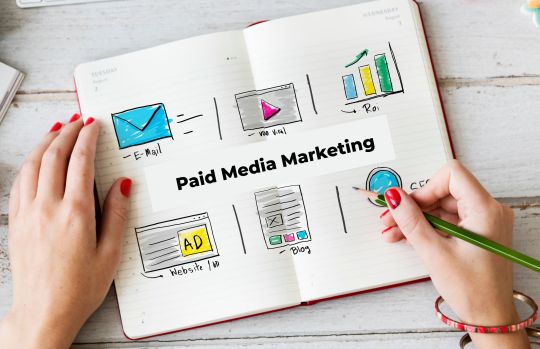
In the fast-paced digital landscape, businesses are constantly seeking effective strategies to enhance their online presence and reach their target audience. Paid media marketing has emerged as a powerful tool to achieve these goals. This comprehensive introduction to paid media marketing will help beginners understand its fundamental concepts, benefits, and how to implement it effectively within their digital marketing strategy.
Understanding Paid Media Marketing
Paid media marketing refers to any form of digital advertising where businesses pay to have their content displayed on various platforms. This can include pay-per-click (PPC) advertising, social media ads, display ads, and more. Unlike organic marketing efforts, paid media provides immediate visibility and reach, allowing businesses to target specific audiences with precision.
Key Components of Paid Media Marketing
1. Pay-Per-Click (PPC) Advertising
Among paid media, PPC advertising is one of the most often used types. Advertisers pay a charge under this arrangement for each click on their advertisement. It is primarily used on search engines like Google and Bing. PPC ads appear at the top of search engine results pages (SERPs), providing instant visibility.
Benefits of PPC:
Immediate Results: Unlike SEO, which takes time to build, PPC can drive traffic to your website instantly.
Targeted Advertising:PC enables accurate targeting according to geography, demographics, keywords, and other factors.
Cost Control: Advertisers can set budgets and only pay for actual clicks, making it cost-effective.
2. Social Media Advertising
Social media ads are another critical component of paid media marketing. Platforms like Facebook, Instagram, LinkedIn, and Twitter offer robust advertising options, allowing businesses to target users based on their interests, behaviors, and demographics.
Benefits of Social Media Ads:
Extensive Reach: Social media platforms have billions of active users, offering a vast audience for your ads.
Engagement: Social media ads can be interactive, encouraging users to engage through likes, shares, comments, and clicks.
Advanced Targeting: Detailed targeting options enable advertisers to reach specific segments of their audience effectively.
3. Display Advertising
Display ads are visual advertisements that appear on websites within the Google Display Network and other ad networks. They can be in the form of banners, images, or videos and are designed to attract attention and drive traffic to the advertiser's site.
Benefits of Display Ads:
Visual Appeal: Display ads can be highly creative and visually engaging, capturing users' attention effectively.
Retargeting Opportunities: Display ads can be used for retargeting campaigns, reaching users who have previously visited your website.
Brand Awareness: They are excellent for building brand awareness and keeping your brand top-of-mind among potential customers.
Implementing Paid Media Marketing
To effectively implement paid media marketing, it’s essential to understand the key steps involved:
1. Define Your Goals
Start by defining clear objectives for your paid media campaigns. Whether you aim to increase website traffic, generate leads, or boost sales, having specific goals will guide your strategy and help measure success.
2. Choose the Right Platforms
Select the platforms that align best with your target audience and business goals. For example, if you’re targeting professionals, LinkedIn might be more effective, whereas Instagram could be better for reaching younger demographics.
3. Conduct Keyword Research
For PPC campaigns, thorough keyword research is crucial. Identify the keywords your target audience is searching for and bid on those that are most relevant to your products or services.
4. Create Compelling Ad Content
Create compelling and pertinent advertising content that appeals to your target market. High-quality visuals, compelling copy, and a clear call to action (CTA) are essential components of successful ads.
5. Set Budgets and Bids
Determine your advertising budget and set appropriate bids for your ads. Consider the cost-per-click (CPC) or cost-per-impression (CPM) and ensure you’re getting the most value for your investment.
6. Monitor and Optimize
Keep a close eye on your sponsored media initiatives' results. Use analytics tools to track key metrics such as click-through rates (CTR), conversion rates, and return on investment (ROI). Based on these insights, optimize your campaigns for better performance.
Benefits of Paid Media Marketing
1. Enhanced Visibility
Paid media provides immediate visibility for your brand, placing your ads in front of a broad audience. This is especially beneficial for new businesses looking to establish an online presence quickly.
2. Targeted Reach
Paid media allows for precise targeting, ensuring your ads are seen by the right people. Better conversion rates and increased engagement rates follow from this.
3. Measurable Results
With paid media, you can track and measure the performance of your campaigns in real-time. This data-driven approach enables you to make informed decisions and continuously improve your strategy.
4. Cost-Effective
Paid media can be highly cost-effective, especially with models like PPC, where you only pay for actual clicks. With careful budget management, you can achieve significant results without overspending.
Conclusion
Paid media marketing is a powerful tool that can significantly enhance your digital marketing efforts. By understanding its components, implementing it strategically, and continuously optimizing your campaigns, you can achieve your business goals effectively. Partnering with a reputable PPC company and Digital Marketing services provider like Flexsin can help you navigate the complexities of paid media and maximize your return on investment. Embrace the power of paid media marketing and watch your business thrive in the digital landscape.
2 notes
·
View notes
Text
How to Make Money Online by Internet: A Comprehensive Guide for Beginners
In today’s digital age, the internet offers countless opportunities to make money online. Whether you're looking for a side hustle or want to build a full-time online career, there are numerous ways to earn income from the comfort of your home. This guide will walk you through various methods, from freelance work to starting your own business, and everything in between. Why Make Money Online?Making money online provides unparalleled flexibility, independence, and the ability to reach a global audience. Here are a few reasons why more people are turning to the internet for income:- **Flexible work hours**: Choose when and how much you work.- **Global marketplace**: Sell products or services to anyone, anywhere.- **Low startup costs**: Many online businesses require minimal investment.- **Multiple streams of income**: Diversify your earnings through various channels.Let’s dive into some of the most effective ways to make money online using the internet.
1. Freelancing is one of the most popular ways to earn money online. Platforms like Upwork, Fiverr, and Freelancer allow you to offer your skills to clients worldwide. Whether you're a writer, designer, developer, or marketer, there are plenty of opportunities to land freelance gigs.**Steps to start freelancing**:- Identify your niche and skills (e.g., writing, graphic design, programming).- Create an account on freelance platforms.- Build a portfolio showcasing your best work.- Set competitive rates and start applying for jobs.**Pro Tip**: Focus on delivering high-quality work and build long-term relationships with clients to ensure recurring income.
2. Blogging blogging is an excellent way to share your knowledge and earn money through advertisements, sponsored content, and affiliate marketing. If you’re passionate about a topic, whether it's technology, travel, or finance, you can create a blog and monetize it over time.**Steps to start a blog**:- Choose a niche you're passionate about (e.g., personal finance, fitness).- Pick a domain name and a reliable hosting provider.- Use platforms like WordPress or Blogger to create your blog.- Start writing valuable, SEO-friendly content that resonates with your audience.**Monetization options**:- **Affiliate marketing**: Promote products and earn commissions when readers purchase through your links.- **Google AdSense**: Display ads on your blog and earn revenue based on clicks and impressions.- **Sponsored posts**: Partner with brands to write articles promoting their products or services.**Pro Tip**: Consistency is key. Post regularly and use SEO strategies to rank higher on search engines, driving organic traffic to your blog.
3. Affiliate marketing allows you to earn a commission by promoting other companies' products or services. You don’t need to create your own products; instead, you simply drive traffic to a retailer's website and earn a percentage of each sale made through your referral.**Steps to start affiliate marketing**:- Choose a niche or industry you're familiar with.- Sign up for affiliate programs (e.g., Amazon Associates, ShareASale, CJ Affiliate).- Promote products through blog posts, social media, or YouTube.- Include affiliate links and earn commissions on each sale.**Pro Tip**: Build trust with your audience by promoting products that you have personally used or believe in.
4. Selling Digital Products digital products such as e-book, online courses, and printable are another excellent way to make money online. Unlike physical products, digital products have no inventory, shipping, or handling costs.**Popular digital products**:-E Books**: Write an e-book on a topic you’re knowledgeable about and sell it on platforms like Amazon Kindle.- **Online courses**: Share your expertise by creating video courses on platforms like Udemy or Teachable.- **Printable**: Design digital planners, calendars, or art prints and sell them on Etsy or your own website.**Pro Tip**: Focus on creating high-quality, value-driven products that solve a problem or meet a need for your target audience.
5. Corresponding allows you to sell products without holding any inventory. Instead, you work with suppliers who ship products directly to customers on your behalf. It’s an excellent way to start an ecommerce business with minimal upfront costs.**Steps to start drop-shipping**:- Choose a niche or product category (e.g., home decor, tech gadgets).- Create an online store using platforms like Shopify or WooCommerce.- Partner with reliable suppliers through sites like AliExpress or Overly.- Market your products through social media and paid ads.**Pro Tip**: Focus on marketing and customer service, as suppliers handle inventory and fulfillment.
6. YouTube and Content Creation if you enjoy creating videos, starting a YouTube channel can be a lucrative option. Content creators can earn money through and revenue, sponsorships, and affiliate marketing. Whether you’re vlogging, sharing tutorials, or reviewing products, there’s an audience for almost every type of content on YouTube.**Steps to start a YouTube channel**:- Choose a niche or theme for your channel (e.g., tech reviews, cooking, lifestyle).- Create and upload high-quality, engaging videos regularly.- Optimize your videos for SEO by using relevant keywords in titles, descriptions, and tags.- Enable monetization through Google AdSense once you meet YouTube’s eligibility requirements.**Pro Tip**: Be patient and consistent. Building an audience takes time, but with dedication, it can become a full-time income stream.
7. Online Tutoring and Consulting if you have expertise in a particular field, you can offer tutoring or consulting services online. Platforms like VIP Kid, Want, and Clarity.fm connect experts with students or clients looking for personalized guidance.**Steps to start online tutoring or consulting**:- Identify your area of expertise (e.g., English language, business coaching, marketing).- Sign up on tutoring platforms or create a website to offer your services.- Set competitive rates and promote your services through social media, LinkedIn, and online communities.**Pro Tip**: Offer a free consultation or trial session to attract potential clients and showcase your expertise.
8. Virtual Assistant (Van) Service many businesses and entrepreneurs need help with administrative tasks, customer service, social media management, and more. As a virtual assistant, you can offer a variety of services depending on your skill set.**Steps to become a virtual assistant**:- Define the services you’ll offer (e.g., email management, bookkeeping, social media).- Create a portfolio or resume showcasing your skills.- Apply for Van jobs on platforms like Upwork, Remote.co, or Flex Jobs.- Network in online communities to find potential clients.**Pro Tip**: Specialize in a specific area (e.g., social media management) to stand out in a competitive market.
Final Thoughts the internet provides limitless opportunities to make money online. Whether you want to start a side hustle or build a full-time business, the key is to choose a path that aligns with your skills, interests, and long-term goals. Remember to stay consistent, focus on delivering value, and continuously learn and adapt to the ever-changing digital landscape.Start today and take the first step toward financial freedom!

5 notes
·
View notes
Text
The Ultimate Guide: How to Boost Website Traffic Fast

In today's competitive digital landscape, the ability to drive significant traffic to your website quickly can make all the difference between success and obscurity. Whether running an e-commerce site, a blog, or promoting a service, understanding how to effectively boost website traffic fast is essential. In this comprehensive guide, we'll explore actionable strategies and techniques you can implement immediately to increase your website's visibility and attract more visitors in record time.
1. Conduct Thorough Keyword Research
Keyword research forms the foundation of any successful traffic generation strategy. Start by identifying relevant keywords and phrases that your target audience is searching for. Use tools like Google Keyword Planner, SEMrush, or Ahrefs to discover high-volume keywords with moderate competition. Focus on long-tail keywords that are specific to your niche and align with the intent of your audience.
2. Optimize Your Website for Search Engines (SEO)
Search Engine Optimization (SEO) is crucial for improving your website's visibility in search engine results pages (SERPs). Ensure your website is optimized for on-page factors such as meta titles, meta descriptions, headers, and alt text for images. Create high-quality, informative content that incorporates your target keywords naturally. Aim to provide value and solve problems for your audience to encourage longer dwell times and repeat visits.
3. Create Compelling Content on a Regular Basis
Content remains king when it comes to attracting and retaining website traffic. Develop a content strategy that includes blog posts, articles, videos, infographics, podcasts, and more. Focus on creating engaging, relevant content that addresses your audience's pain points, interests, and questions. Use a mix of formats to appeal to different preferences and increase your chances of ranking in different types of search results.
4. Leverage Social Media Channels Effectively
Social media platforms are powerful tools for driving traffic to your website. Establish a strong presence on platforms where your target audience spends their time, such as Facebook, Instagram, Twitter, LinkedIn, Pinterest, or TikTok. Share your content consistently, engage with your followers, and participate in relevant conversations and communities. Use visually appealing images, videos, and captions that encourage clicks and shares to broaden your reach.
5. Utilize Paid Advertising Campaigns
Paid advertising campaigns can provide an immediate boost in website traffic when executed effectively. Consider platforms like Google Ads, Facebook Ads, LinkedIn Ads, or Twitter Ads to target specific demographics, interests, and behaviors relevant to your audience. Set clear objectives, monitor performance metrics, and optimize your campaigns regularly to maximize your return on investment (ROI) and attract qualified traffic to your website.
6. Implement On-Page and Technical SEO Practices
Ensure your website is technically optimized for speed, mobile-friendliness, and usability. Improve page loading times, optimize images and videos, and use descriptive URLs and headers to enhance user experience and search engine visibility. Focus on creating a seamless navigation structure and clear calls-to-action (CTAs) that guide visitors towards desired actions, such as signing up for a newsletter or making a purchase.
7. Engage with Influencers and Collaborate with Partners
Partnering with influencers, industry experts, or complementary businesses can expose your website to new audiences and drive traffic quickly. Collaborate on joint content projects, webinars, or social media campaigns to leverage each other's followers and increase your reach. Guest blogging on reputable sites in your niche or participating in interviews and podcasts can also help establish your authority and drive traffic back to your website.
8. Optimize for Mobile and User Experience (UX)
With an increasing number of users accessing the internet via mobile devices, optimizing your website for mobile is essential. Ensure your site is responsive and loads quickly on smartphones and tablets. Simplify navigation, minimize pop-ups, and prioritize content that is easy to read and interact with on smaller screens. A positive user experience encourages longer visits and reduces bounce rates, signaling to search engines that your site is valuable to users.
9. Monitor Analytics and Iterate Your Strategies
Regularly monitor your website traffic and performance metrics using tools like Google Analytics. Track key metrics such as traffic sources, bounce rates, conversion rates, and engagement levels. Analyze which strategies are driving the most traffic and conversions, and adjust your tactics accordingly. Experiment with A/B testing, refine your content and marketing strategies, and stay agile in responding to changes in your audience's preferences and behaviors.
10. Stay Updated with Industry Trends and Algorithm Changes
The digital landscape is constantly evolving, with search engine algorithms and consumer behaviors shifting regularly. Stay informed about industry trends, algorithm updates, and emerging technologies that could impact your website's traffic and visibility. Adapt your strategies and tactics accordingly to stay ahead of the competition and maintain sustainable growth in website traffic over the long term.
In conclusion, boosting website traffic fast requires a strategic and multifaceted approach that combines SEO, content marketing, social media engagement, paid advertising, and continuous optimization. By implementing these actionable strategies and consistently delivering value to your audience, you can attract more visitors, enhance user engagement, and achieve your business objectives effectively.
3 notes
·
View notes
Text
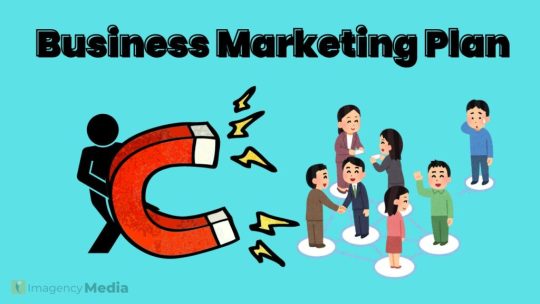
In the bustling world of e-commerce, standing out can be both a challenge and an opportunity for small businesses. Crafting a well-rounded marketing plan is essential to gaining visibility, driving sales, and building a loyal customer base. Whether you're just starting out or looking to refine your existing strategies, a structured marketing plan can set the foundation for success. Here’s a comprehensive guide to developing a marketing plan tailored for a small e-commerce business.
Understand Your Market and Audience Before diving into marketing tactics, it's crucial to have a deep understanding of your market and target audience. Conduct market research to identify your ideal customers, their needs, preferences, and shopping behaviors. Use surveys, interviews, and social media insights to gather data. Analyze your competitors to understand their strengths, weaknesses, and the market gaps you can exploit. Key Questions to Answer: Who are your ideal customers? What are their pain points and needs? How do they prefer to shop online? What are your competitors doing well, and where are their shortcomings?
Define Your Unique Value Proposition (UVP) Your Unique Value Proposition (UVP) differentiates your business from competitors. It should clearly articulate why customers should choose your products or services over others. Your UVP should focus on the unique benefits and features of your offerings, such as superior quality, exceptional customer service, or exclusive products. Steps to Develop a UVP: Identify what makes your products or services unique. Highlight benefits that resonate with your target audience. Communicate your UVP clearly across all marketing channels.
Set Clear Marketing Objectives Setting clear and measurable marketing objectives is essential for tracking progress and ensuring that your efforts align with your business goals. Objectives might include increasing website traffic, boosting conversion rates, or growing your social media following. SMART Objectives: Specific: Clearly define what you want to achieve. Measurable: Ensure you can track progress (e.g., increase website traffic by 30%). Achievable: Set realistic goals based on your resources. Relevant: Align objectives with broader business goals. Time-bound: Set a timeline for achieving each objective.
Choose Your Marketing Channels Selecting the right marketing channels depends on where your target audience spends their time. A mix of channels often works best, but it's essential to focus on those that will yield the highest returns. Key Channels to Consider: Social Media: Platforms like Facebook, Instagram, and Pinterest are excellent for brand building and driving traffic. Tailor your content to each platform’s audience and features. Email Marketing: Build and nurture an email list with personalized and targeted campaigns. Regular newsletters, promotional offers, and abandoned cart reminders can drive sales and customer retention. Content Marketing: Create valuable content such as blog posts, videos, and infographics that address your audience’s pain points and interests. Quality content can drive organic traffic and establish your brand as an industry authority. Search Engine Optimization (SEO): Optimize your website and content for search engines to increase organic traffic. Focus on relevant keywords, high-quality content, and a user-friendly website structure. Paid Advertising: Invest in pay-per-click (PPC) campaigns on Google Ads or social media ads to drive targeted traffic. Utilize retargeting strategies to convert previous visitors into customers.
Develop a Content Strategy A well-planned content strategy helps in creating engaging and relevant content that attracts and retains your target audience. Your content should align with your brand’s voice and address the needs and interests of your audience. Content Strategy Components: Content Calendar: Plan your content in advance to ensure consistency. Include blog posts, social media updates, email campaigns, and other content types. Content Types: Diversify your content with articles, videos, infographics, and user-generated content. Engagement: Encourage interaction through comments, shares, and feedback. Respond to customer inquiries and engage with your audience to build relationships.
Leverage Analytics and Track Performance Monitoring and analyzing your marketing efforts is crucial for understanding what works and what needs adjustment. Use analytics tools to track key performance indicators (KPIs) such as website traffic, conversion rates, and customer acquisition costs. Analytics Tools: Google Analytics: Track website traffic, user behavior, and conversion rates. Social Media Insights: Analyze engagement metrics on social media platforms. Email Marketing Metrics: Monitor open rates, click-through rates, and conversion rates from email campaigns. Regularly review your performance data, compare it against your objectives, and adjust your strategies accordingly. Continuous optimization based on data insights will help you stay competitive and achieve better results.
Budget Wisely A well-defined budget ensures that you allocate resources effectively across different marketing channels. Determine how much you can invest in each area and prioritize spending based on potential return on investment (ROI). Budgeting Tips: Allocate Funds: Distribute your budget across channels that align with your goals and audience. Track Spending: Monitor your expenses to avoid overspending and ensure efficient use of resources. Adjust as Needed: Be flexible and adjust your budget based on performance and changing priorities.
Build Strong Customer Relationships Customer retention is as important as acquiring new customers. Focus on building strong relationships through excellent customer service, personalized experiences, and loyalty programs. Retention Strategies: Personalization: Tailor recommendations and communications based on customer behavior and preferences. Loyalty Programs: Reward repeat customers with discounts, points, or exclusive offers. Customer Feedback: Encourage and act on customer feedback to improve your products and services.
Adapt and Innovate The e-commerce landscape is constantly evolving, and so should your marketing strategies. Stay informed about industry trends, new technologies, and changing customer preferences. Be prepared to adapt and innovate to remain competitive and meet your customers’ evolving needs. Staying Ahead: Industry Trends: Follow industry news and trends to stay updated. Emerging Technologies: Explore new technologies and tools that can enhance your marketing efforts. Customer Feedback: Continuously gather and act on customer feedback to improve your offerings. Conclusion Developing a comprehensive marketing plan for your small e-commerce business involves understanding your market, defining your UVP, setting clear objectives, and choosing the right channels. By creating a strategic content plan, leveraging analytics, budgeting wisely, and focusing on customer relationships, you can drive growth and achieve success. Remember, a successful marketing plan is dynamic and should evolve based on performance and market changes. Embrace innovation and stay adaptable to build a thriving e-commerce business.
2 notes
·
View notes
Text
Unveiling Effective Digital Marketing Strategies: A Comprehensive Guide
Introduction:
In today's fast-paced digital era, businesses constantly seek innovative ways to engage their target audience. With a plethora of digital marketing strategies available, navigating this landscape can be daunting. However, understanding and implementing the most effective tactics can unlock new opportunities for growth and success.
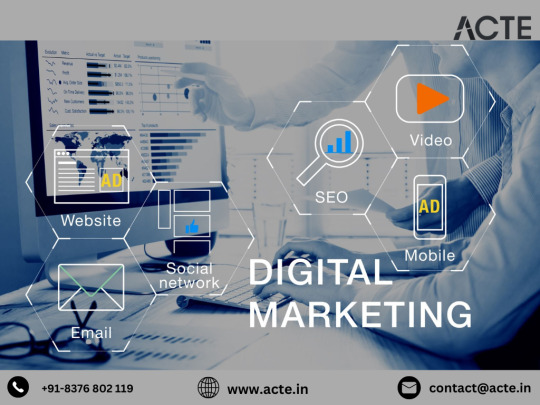
This comprehensive guide explores ten powerful digital marketing strategies and how they can be utilized to achieve your business objectives.
Chapter 1: Search Engine Optimization (SEO)
Search Engine Optimization (SEO) is fundamental to any successful digital marketing strategy. It involves optimizing your website to improve visibility in search engine results pages (SERPs) and attract organic traffic. Through keyword research, on-page optimization, technical SEO, and link building, a well-executed SEO strategy can enhance online presence, increase brand visibility, and drive targeted traffic.
Chapter 2: Content Marketing
Content marketing revolves around creating and distributing valuable, relevant content to engage your target audience. This includes blog posts, articles, videos, infographics, and more. By providing informative and entertaining content, you can build trust, establish authority, and drive organic traffic to your website, while also supporting other digital marketing efforts such as SEO and social media.
Chapter 3: Social Media Marketing
Social media platforms like Facebook, Instagram, Twitter, LinkedIn, and Pinterest offer powerful tools for connecting with your audience. Social media marketing involves creating compelling content, running targeted ads, and engaging with followers to increase brand awareness, drive website traffic, and generate leads. A well-planned social media strategy can foster a loyal community, nurture relationships, and drive conversions.
Chapter 4: Email Marketing
Email marketing remains one of the most effective ways to nurture leads and drive conversions. By building an email list and sending targeted, personalized emails, you can deliver relevant content, nurture leads through the sales funnel, and encourage action. With segmentation, automation, and personalization, email marketing enables delivering the right message to the right person at the right time.
Chapter 5: Pay-Per-Click (PPC) Advertising
Pay-Per-Click (PPC) advertising allows bidding for ad placement in search engine results or on other websites. Platforms like Google Ads and Bing Ads offer robust targeting options, enabling reaching your ideal audience based on keywords, demographics, and interests. PPC advertising drives targeted traffic to your website and generates leads or sales, with payment only upon ad clicks.

Chapter 6: Influencer Marketing
Influencer marketing involves collaborating with influential individuals on social media to promote products or services. By leveraging influencers' reach and credibility, you can reach a larger audience, build trust, and drive conversions. Authentic influencer partnerships create engaging content that resonates with your audience, increasing brand awareness and driving sales.
Chapter 7: Video Marketing
Video content continues to rise in popularity, offering a powerful marketing tool. Whether tutorials, product demos, or testimonials, video connects with your audience on a deeper level and drives engagement. Platforms like YouTube, TikTok, and Instagram provide opportunities to reach a vast audience with compelling video content, boosting brand visibility and website traffic.
Chapter 8: Affiliate Marketing
Affiliate marketing involves partnering with affiliates to promote your products or services in exchange for a commission on sales. Leveraging affiliates' reach and influence, you can increase brand exposure, drive traffic, and generate sales without upfront costs. Scalable and cost-effective, affiliate marketing expands reach and grows your business.
Chapter 9: Mobile Marketing
Optimizing digital marketing efforts for mobile devices is crucial with the rise of smartphones and tablets. Ensuring a mobile-friendly website, creating mobile-optimized content, and leveraging mobile-specific channels like SMS marketing reach consumers on the go. Mobile marketing delivers targeted messages, driving engagement and conversions.
Chapter 10: Remarketing
Remarketing targets users who have previously interacted with your brand but not converted. Serving targeted ads to these users encourages them to complete their purchase, maximizing ROI. Remarketing re-engages potential customers, drives conversions, and boosts the effectiveness of digital marketing efforts.
Conclusion:
Mastering digital marketing involves understanding various strategies and tactics and applying them effectively to achieve business goals. By leveraging SEO, content marketing, social media, email marketing, PPC advertising, influencer marketing, video marketing, affiliate marketing, mobile marketing, and remarketing, you can create a comprehensive strategy that drives results. With the right approach, digital marketing increases brand awareness, drives traffic, generates leads, and fuels business growth in today's competitive digital landscape.
#training#digital marketing#digital marketing course#email marketing#online marketing#search engine optimization#seo#digital marketing company#seo services#tech
3 notes
·
View notes
Text
Maximizing Reach: The Ultimate Guide to Facebook Marketing
Discover the secrets to dominating Facebook marketing and reaching a wider audience with our comprehensive guide to success!
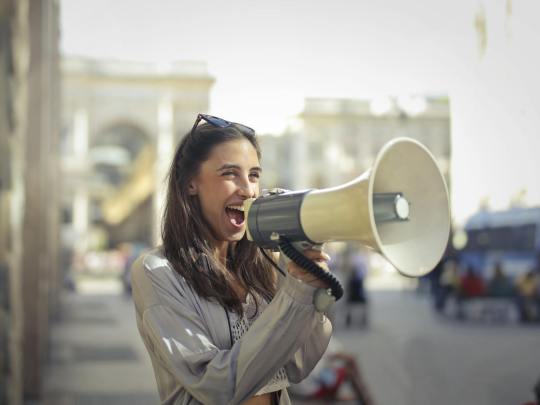
Image courtesy of Andrea Piacquadio via Pexels
Table of Contents
Understanding Your Audience on Facebook and Instagram
Crafting Engaging Content for Facebook and Instagram
Leveraging Ads on Facebook and Instagram
Building a Strong Social Media Presence
Collaborating with Influencers on Facebook and Instagram
Conclusion
Hey there, digital marketing enthusiasts! We all know that Facebook and Instagram are prime platforms for growing your business and connecting with your audience. Today, we're diving deep into how you can make the most of your digital marketing strategies on these social media giants. Let's get started!
Understanding Your Audience on Facebook and Instagram
When it comes to reaching your target audience on Facebook and Instagram, knowing who you're talking to is key. Facebook is home to a diverse user base, with over 70% of adults in the US using the platform. On the other hand, Instagram skews younger, with a majority of users falling in the under-35 age group. By understanding the demographics of each platform, you can tailor your content to appeal to the right audience.
Stay Connected and Boost Engagement with Our Newsletter!
Get exclusive tips and strategies for maximizing your Facebook marketing reach.
Start Now
Crafting Engaging Content for Facebook and Instagram
Creating content that captures the attention of your audience is essential for digital marketing success. On Facebook, eye-catching visuals and compelling copy can help your posts stand out in users' crowded news feeds. Instagram, being a visual-first platform, thrives on stunning imagery and engaging videos. Make sure to use high-quality visuals and incorporate storytelling to draw your audience in.
Learn how to maximize your reach on Facebook and watch your business soar! [insert link] #facebookmarketing #socialmediatips
Leveraging Ads on Facebook and Instagram
Advertising on Facebook and Instagram can supercharge your digital marketing efforts. Facebook's robust ad platform allows you to target specific demographics, interests, and behaviors, ensuring your ads reach the right people. Instagram ads, seamlessly integrated into users' feeds, can help increase brand visibility and drive traffic to your website. Experiment with different ad formats and targeting options to find what works best for your business.

Image courtesy of www.adspaceagency.com via Google Images
Building a Strong Social Media Presence
Consistency is key when it comes to building a strong social media presence. Regularly posting content on Facebook and Instagram keeps your audience engaged and interested in what you have to say. Interacting with your followers through comments, messages, and stories humanizes your brand and fosters a sense of community. Don't forget to track your performance using analytics to understand what content resonates with your audience.
Collaborating with Influencers on Facebook and Instagram
Partnering with influencers can help amplify your brand's reach on Facebook and Instagram. Influencers have dedicated followings who trust their recommendations, making them powerful advocates for your products or services. When selecting influencers to collaborate with, consider factors such as their niche, engagement rates, and authenticity. Measure the success of influencer partnerships by tracking metrics like engagement, reach, and conversions.
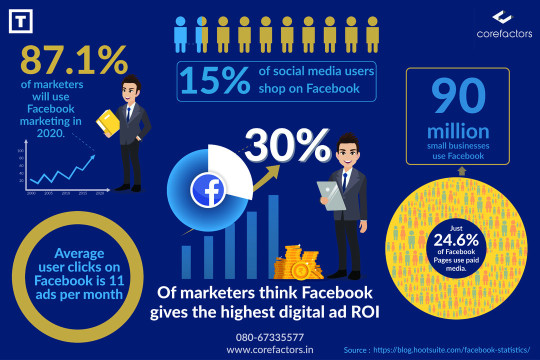
Image courtesy of www.linkedin.com via Google Images
Stay Connected and Boost Engagement with Our Newsletter!
Get exclusive tips and strategies for maximizing your Facebook marketing reach.
Conclusion
So there you have it - the ultimate guide to maximizing your digital marketing strategies on Facebook and Instagram. By understanding your audience, crafting engaging content, leveraging ads, building a strong social media presence, and collaborating with influencers, you can take your digital marketing game to the next level. Remember, digital marketing is all about experimentation and adaptation, so don't be afraid to try new things and pivot your strategies based on what works best for your business. Happy marketing!
2 notes
·
View notes
Text
How to manage your online reputation in the competitive era?
Introduction
In today’s hyper-connected and competitive digital landscape, managing your online reputation is more crucial than ever. The perception of your personal or professional brand can make or break your success in a highly competitive market. In this comprehensive guide, we will explore proven strategies to help you effectively manage your online reputation amidst fierce competition. By implementing these strategies, you can safeguard your image, build trust with your audience, and stay ahead in a competitive era.
Measures to manage your online reputation
Conduct regular online monitoring
Regularly monitoring your online presence is the first step in managing your reputation in a competitive era. Stay vigilant and track mentions of your name, brand, or business on search engines and social media platforms. Utilize online monitoring tools and set up alerts to receive notifications when your name or brand is mentioned. By staying informed about what is being said about you, you can quickly address any negative content, respond to feedback, and proactively manage your reputation.
2. Build a strong brand identity
In a competitive era, establishing a strong brand identity is crucial for managing your online reputation. Clearly define your brand values, unique selling propositions, and target audience. Develop a consistent brand voice and visual identity that set you apart from your competitors. Showcase your expertise, values, and personality through your website, social media profiles, and content. By cultivating a strong and distinct brand identity, you can attract your ideal audience and build a positive reputation.
3. Create and share valuable content
Content creation is a powerful tool for managing your online reputation in a competitive landscape. Produce high-quality, informative, and engaging content that resonates with your target audience. Address their pain points, provide solutions, and share valuable insights through blog posts, articles, videos, podcasts, and social media content. By consistently delivering valuable content, you establish yourself as an authority in your industry and build credibility. This sets you apart from your competitors and strengthens your online reputation.
4. Engage and interact with your audience
Active engagement with your audience is vital in the competitive era for managing your online reputation effectively. Respond promptly and sincerely to comments, messages, and reviews across various platforms. Show appreciation for positive feedback and address negative feedback with empathy and a desire to resolve any issues. Foster meaningful connections by participating in relevant discussions, initiating conversations, and seeking feedback from your audience. By engaging authentically, you can build trust, strengthen relationships, and protect your reputation.
5. Monitor and address online reviews
Online reviews play a significant role in shaping your online reputation in a competitive environment. Regularly monitor and respond to reviews on platforms such as Google, Yelp, or industry-specific review websites. Express gratitude for positive reviews and address any negative reviews professionally and constructively. Offer solutions or seek to resolve the concerns raised. By actively managing online reviews, you demonstrate your commitment to customer satisfaction and maintain a positive reputation.
“Digital Marketing Services in India offer tailored solutions to boost online visibility, drive targeted traffic, and enhance conversions. Services include SEO, social media marketing, PPC advertising, and content marketing, helping businesses thrive in the competitive market.”
6. Stay active and consistent on social media
Social media presence is crucial for managing your reputation in the competitive era. Select relevant platforms based on your target audience and industry. Regularly share engaging content, interact with your followers, and participate in industry conversations. Use social media to showcase your expertise, build relationships, and provide value to your audience. Stay consistent in your posting frequency and brand messaging. By maintaining an active and consistent social media presence, you can strengthen your reputation and stay top of mind in a competitive market.
7. Transparency and authenticity
In today’s competitive era, transparency and authenticity are highly valued by consumers. Be honest, open, and transparent in your communications, business practices, and interactions. Share behind-the-scenes glimpses, success stories, and even lessons learned. Demonstrate your values and ethics through your actions and decisions. By fostering transparency and authenticity, you build trust and loyalty with your audience, differentiating yourself from competitors who may prioritize appearances over genuine connections.
8. Learn from feedback and improve
View feedback, whether positive or negative, as an opportunity for growth. Embrace constructive criticism and use it to improve your products, services, or personal skills. Actively listen to your audience, make adjustments based on their feedback, and communicate the changes you have implemented. By demonstrating a willingness to learn and improve, you showcase your commitment to excellence and continuously enhance your online reputation.
Conclusion
In the competitive era of the digital age, managing your online reputation requires a proactive and strategic approach. By implementing the strategies outlined in this guide, including regular monitoring, building a strong brand identity, creating valuable content, engaging with your audience, and addressing feedback, you can effectively manage your online reputation.
5 notes
·
View notes
Text
Leveraging Heatmaps for Strategic Website Optimization
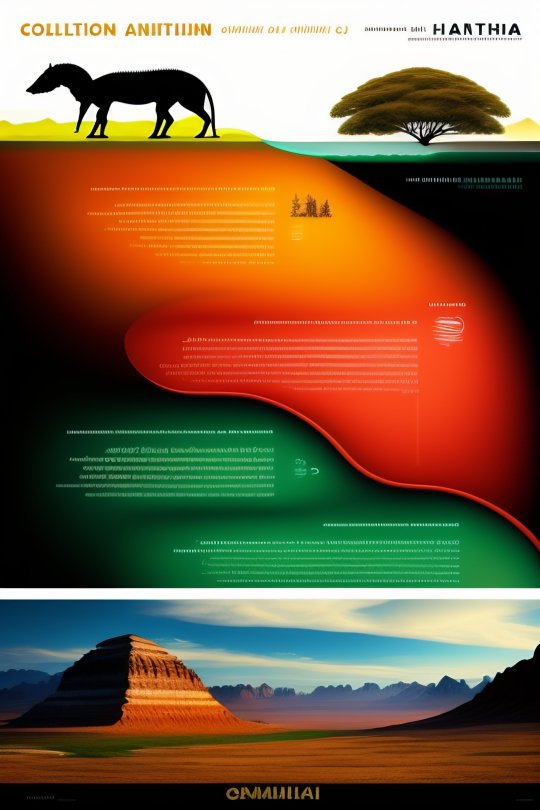
The strategic use of “heatmaps” has become integral to website optimization, propelling your digital strategy toward ultimate success. As part of a multifaceted toolkit alongside Google Analytics, A/B testing, and conversion funnel analysis, heatmaps provide insightful data on user interaction patterns, guiding you in creating a user-centric website design and experience.
Heatmaps serve as a visualization mechanism, translating complex data into easily understandable representations. They help discern where visitors’ attention gravitates when landing on your site and determine the probability of clicks on various webpage areas. Such insights become pivotal when deciding the strategic positioning of crucial links and the elements requiring linking on your site.
A specific category of a heatmap, known as the “mouse movement” heatmap, mirrors the path traced by a visitor’s mouse across your webpage. This type of heatmap holds special significance for internet marketers, offering a data-backed approach to pinpointing optimal placement for promotional information and advertisements. It should be noted, however, that quality often comes at a price in the realm of heatmap tools. Free offerings often fail to deliver the detailed insights you need, making premium, paid tools a wise investment.

I personally recommend Crazy Egg or Contentsquare for comprehensive heatmap reports. Despite being a paid tools, both offer a well-balanced blend of affordability and quality, making them a reliable choice for businesses and individual users.
Utilizing heatmaps isn’t merely a passing trend; it’s essential to strategic decision-making in content creation and website design. A heatmap is a diagnostic tool unveiling a wealth of insights into how visitors navigate your web pages. These insights can significantly enhance your website’s engagement, steering the user journey down the conversion funnel more efficiently. Example below.

A deeper dive into the heatmap territory introduces another valuable tool called ‘scroll mapping’. Scroll maps are an extension of heatmaps that offer insightful details about how far down users are scrolling on your web pages. This is crucial to understand, as it highlights the ‘fold’ – the point at which users must start scrolling to see more. Data from scroll maps can reveal whether crucial content or calls to action are being missed because they’re placed too far down the page. In fact, the ‘hottest’ areas of a scroll map often signify the most engaging or attention-grabbing parts of your page. Incorporating scroll map data into your design strategy can enhance your content positioning and overall website usability, ultimately improving engagement and conversion rates. Tools like Crazy Egg or Contentsquare offer robust scroll mapping features, further enriching your understanding of user behavior and website interaction.
Understanding your visitors’ behavior is key to successful website optimization. Heatmaps are the compass guiding you toward informed, user-centric design decisions. So, don’t underestimate the power of a well-analyzed heatmap; it could be the linchpin in your website’s success story.
5 notes
·
View notes
Text
Top Performance Marketing Agencies in Chennai – Maximize Your Business Growth
Introduction
For businesses seeking measurable success, partnering with a top performance marketing agency in Chennai ensures maximum ROI. These agencies specialize in data-driven strategies, advanced analytics, and targeted advertising to enhance brand visibility and drive conversions. This guide explores the best performance-driven agencies and what to consider when selecting one.
Why Choose a Performance Marketing Agency?
A performance marketing agency in Chennai offers:
ROI-Driven SEO – Optimize rankings and boost organic traffic with measurable results.
Precision Targeting in Social Media Marketing – Data-backed audience engagement.
High-Impact Google Ads & PPC Campaigns – Optimize ad spend for the best returns.
Conversion-Focused Content Marketing – Create high-converting blogs, videos, and infographics.
Performance-Based Website Optimization – Improve user experience for better lead generation.
How to Choose the Best Performance Marketing Agency in Chennai
To find a top performance marketing agency in Chennai, consider:
Proven Track Record of Measurable Success – Check case studies and client testimonials.
Data-Driven Decision Making – Choose an agency that uses analytics for optimization.
ROI Transparency & Campaign Metrics – Ensure clear reporting and campaign tracking.
Comprehensive Digital Marketing Services – Agencies should provide SEO, paid ads, and CRO.
Industry-Specific Experience – Look for agencies with experience in your business sector.
Top Digital Marketing Agencies in Chennai
Explore the Top 10 Digital Marketing Agencies in Chennai to find the best performance-driven agencies.
Digital Marketing Learning & Career Growth in Chennai
Looking to enter the field? Check out Top 5 Digital Marketing Courses in Chennai and explore Digital Marketing Salary for Fresher in Chennai for career insights.
Services Offered by Top Performance Marketing Agencies in Chennai
SEO & Local SEO with Performance Metrics – Rank higher and track success.
Strategic Social Media Marketing – Data-driven engagement strategies.
High-Performing Google Ads & PPC – Advanced campaign optimization.
Lead-Focused Content Marketing – Engaging, high-converting digital assets.
Conversion Rate Optimization (CRO) – Optimize website performance for better results.
Conclusion
Choosing a top performance marketing agency in Chennai ensures your brand’s growth with measurable success. Whether you need SEO, PPC, or content marketing, working with a performance-driven agency maximizes results. For industry-leading solutions, partner with Beyond Digital Agency and elevate your digital marketing strategy today!
0 notes
Text
The Ultimate Guide to Digital Marketing Services
This comprehensive guide explores the most effective digital marketing services that help businesses grow, attract customers, and increase revenue. From Search Engine Optimization (SEO) for higher rankings to Pay-Per-Click (PPC) advertising for instant traffic, we cover essential strategies like Social Media Marketing (SMM), Content Marketing, Email Marketing, and more. Learn how Conversion Rate Optimization (CRO), Influencer Marketing, and Google Analytics can enhance your online presence. Whether you're a startup or an established brand, this guide provides the insights you need to create a successful digital marketing strategy.
1 note
·
View note